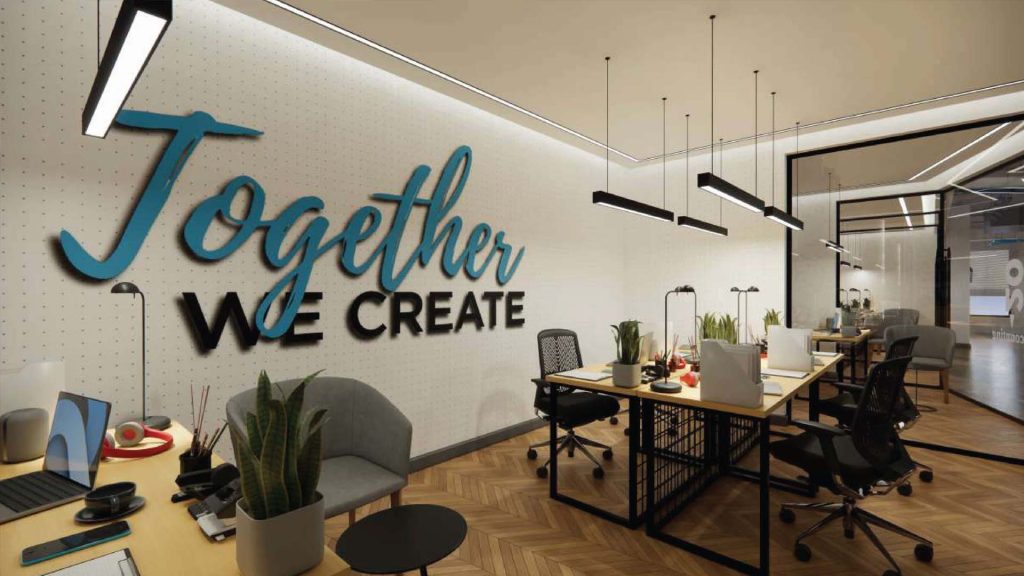
Environment branding is the process of using design features on a property to create a unified branded experience. It involves applying a brand’s identity and character to a space, such as an office, a store, a restaurant, or a hotel, to help that brand connect with its customers and employees in a unique way. Environmental branding can also include elements such as signage, architecture, landscape, wayfinding, lighting, furniture, and art.
Environment Branding matters because it can:
- Reinforce an organization’s culture, mission, and values
- Strengthen employee engagement, pride, and loyalty
- Visually communicate a brand’s vision to customers and prospects
- Elevate an organization above its competitors
- Make a space memorable and easy to navigate
Environmental branding can also have a positive impact on the bottom line. According to a study by Gensler, a global design firm, companies that invest in their work environments are more likely to be innovative, profitable and have higher customer satisfaction ratings.
However, environmental branding is not just about aesthetics. It requires a clear understanding of the brand’s strategy, goals, audience, and personality. It also requires collaboration among various disciplines, such as marketing, interior design, graphic design, landscape design, and architecture. It is important to align the environmental branding with the brand’s other touchpoints, such as its website, brochures, social media, and packaging.
Environment branding is not a one-size-fits-all solution. It should be tailored to the specific needs and preferences of each organization and its stakeholders. It should also be flexible and adaptable to changing trends, technologies, and customer expectations.
Some examples of successful environment branding are:
- Apple Stores: The minimalist design of the Apple Stores reflects the sleek and innovative products of the brand. The stores also offer interactive displays, workshops, technical support, and personalization services that enhance the customer experience.
- Starbucks: The coffee chain creates a cozy and inviting atmosphere in its stores with warm colors, comfortable seating, ambient music, and local artwork. The stores also showcase the brand’s commitment to sustainability, social responsibility, and community involvement.
- Google: The tech giant is known for its colorful and playful work environments that foster creativity, collaboration, and fun. The offices feature slides, hammocks, bikes, games, cafes, and themed rooms that reflect the local culture and history of each location.
If you are looking for an environmental branding agency in Riyadh, you may want to consider [Perpetual Group]. They have extensive experience in creating immersive and engaging spaces that reflect your brand’s identity and values. They can help you transform your space into a powerful marketing tool that attracts and retains your customers and employees.